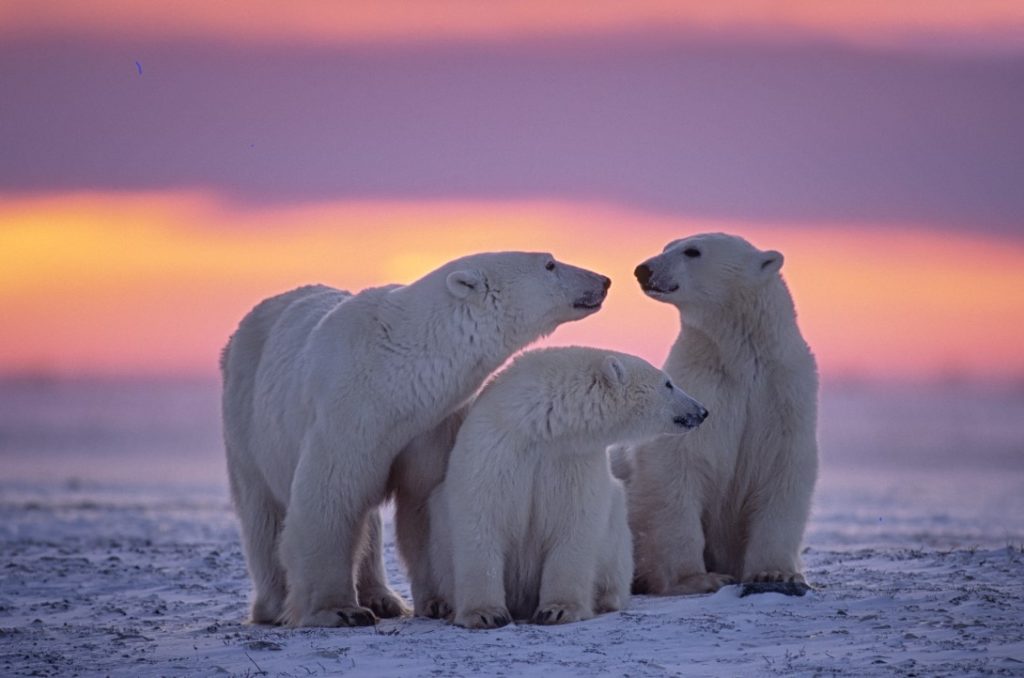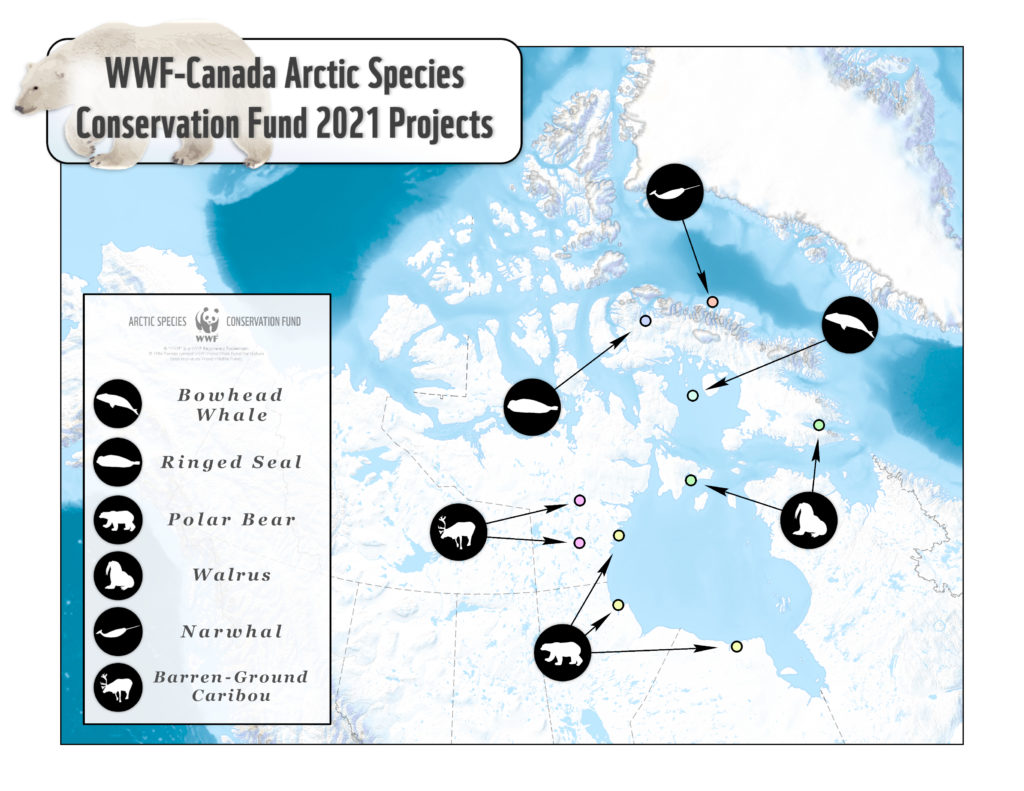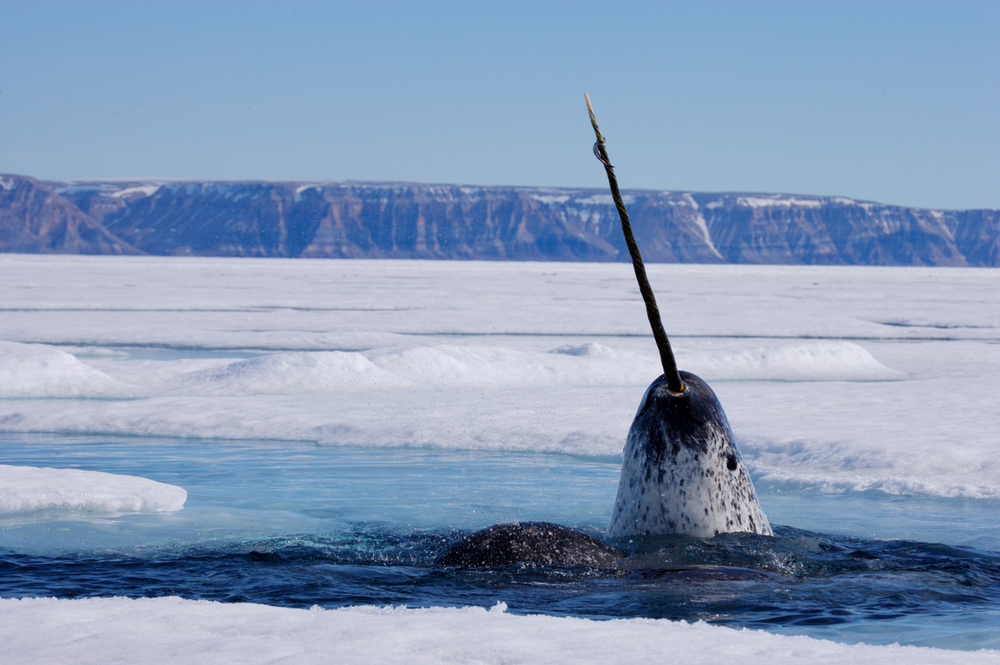Our Arctic Species Conservation Fund returns for sixth field season
With warming temperatures and industrial pressures surging across the North, WWF-Canada’s Arctic Species Conservation Fund (ASCF) launched in 2016 with a clear mission: support high-quality research and stewardship actions that bring together science, technology and Inuit Qaujimajatuqangit (traditional knowledge) to improve understanding and management of Arctic species and habitats.
In the fund’s first half-decade, WWF-Canada has supported more than 80 initiatives by Indigenous, academic, government and scientific organizations. This work is “critical to better understanding this changing environment and helps to amplify the voices of northern communities and researchers alike,” explains Arctic ecosystems associate specialist Jason Harasimo, who helms the ASCF program out of WWF-Canada’s Iqaluit office.

Their results have included identifying every walrus haulout across the Canadian Arctic, reducing human-polar bear conflicts, discovering new migration routes for Greenland sharks, measuring shipping-related stress levels of narwhal, mapping caribou ice-crossings and calving grounds, and documenting new behaviour in narwhals and bowhead whales via drone.
The data from ASCF projects have helped establish protected areas and inform land-use planning, shipping routes and environmental assessments as well as empowering communities, reducing industrial impacts, setting sustainable harvests and deepening knowledge of species that are among the most challenging to study.
And we’re not slowing down — here’s a look at the ambitious work from the ASCF recipients that we’re helping fund this field season:

Walrus and seals
Information from satellites and stationary camera traps is being combined to observe walrus behaviour in haulout habitats. Working with research technicians from Coral Harbour, NU, this community-led project will document reactions to disturbances like passing ships as well as habitat use at different times of day.
Another project looks into evidence of microplastics in walrus to investigate long-standing community concerns around contamination of traditional food sources.
On a similar note, researchers and harvesters will be working together to develop a gold-standard monitoring plan to protect ringed seals from shipping impacts around Baffinland’s Mary River mine. This project is a direct response to what the community of Pond Inlet considered inadequate planning by the mining company, and highlights an ongoing theme of ASCF-funded projects: the importance of serving Inuit interests and ensuring local voices are heard.

Arctic Whales
As climate change brings with it more mining activity and shipping traffic, it’s crucial we learn more about how this affects Arctic whales. A three-year project in Foxe Basin, between Hudson Bay and Baffin Island, will be combining movement and acoustic data to create a three-dimensional depiction of how bowhead whales react to human-made underwater noise. This will provide an invaluable tool in mitigating impacts on wildlife.
Meanwhile, on the other side of Baffin, where 90 per cent of the world’s narwhal reside, researchers are conducting their final year combing through decades of data. Their findings will identify migration routes and important stopover habitats, as well as determine the impacts of warming waters and increased ship traffic, which can inform environmental reviews and planning for protected areas.
Polar bears
Climate change is also increasing human-polar bear conflict, so we’re funding three projects to improve coexistence. To identify the drivers of human-polar bear interaction in southern Hudson Bay, researchers are working with northern Ontario communities to record their priorities, contributing to regional management efforts and strengthening the development of the feasibility study for the proposed Mushkegowuk National Marine Conservation Area.
On the western side of the bay, we’re continuing our bear monitor partnership with the community of Whale Cove, NU to keep people safe and document species behaviour.
And in Churchill, MB — where we’ve been longstanding partners in the world’s most comprehensive satellite telemetry study of polar bears — this year’s focus is on using tags to track the movements of problematic bears to better understand why some are prone to conflict.
Barren-ground caribou
Creating an opportunity for a local young person from Baker Lake, NU, to gain valuable work experience in the environmental field, a Youth Wildlife Monitor will join the existing monitoring team to report on the impacts of the Agnico Eagle Meadowbank mine all-weather road on wildlife, especially threatened barren-ground caribou.
We are also proudly supporting the Beverly and Qamanirjuaq Caribou Management Board’s development of a new 10-year strategic plan to ensure the long-term conservation of these herds for the communities that depend on them.

